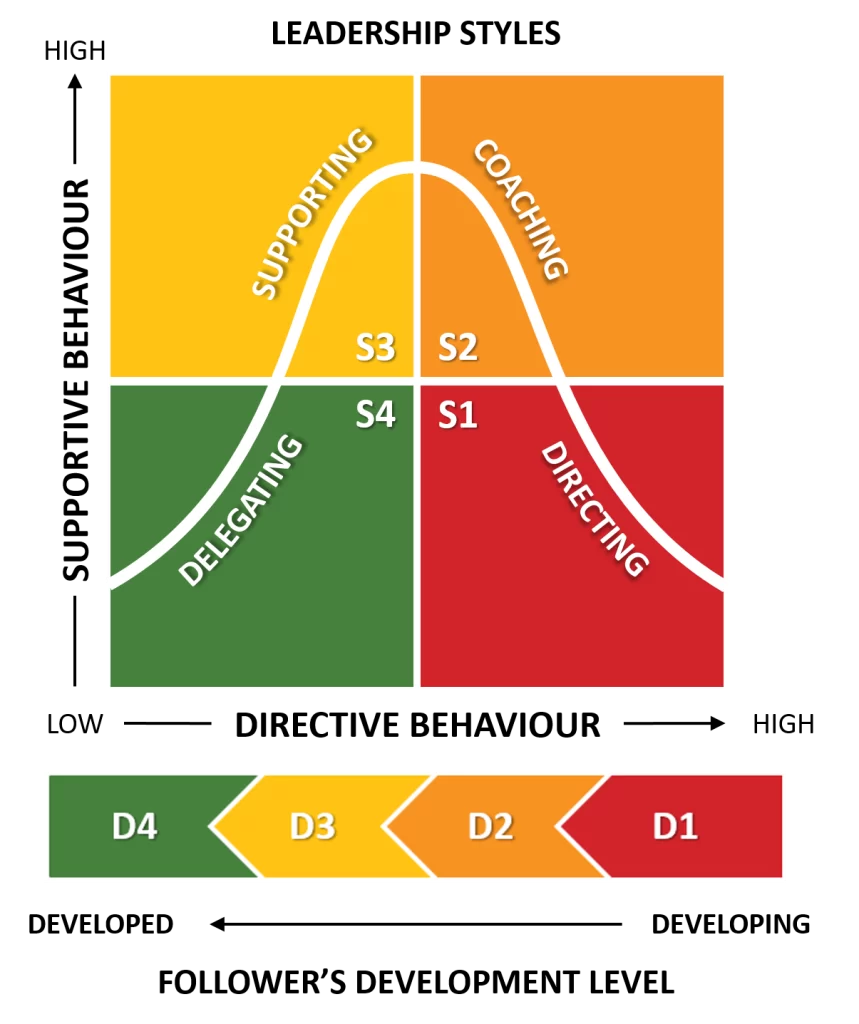On July 5, 2021 Locelle hosted a Roundtable for our mentors to discuss situational leadership in the workplace. We were fortunate to learn from our incredible guest speaker Sonia Wadhwa, Director of Business Management and Operations at Microsoft. Our amazing mentor Stephanie Redivo, Equity, Diversity and Inclusion (EDI) leader at Translink, moderated the session, and with years of leadership experience both Stephanie and Sonia contributed to a valuable session for our mentors. Keep reading to learn about Situational Leadership, and for their top tips on developing Situational Leadership skills.
The Situational Leadership Model
Sonia Wadhwa shared her experience with the Situational Leadership model, stating
“Before I practiced this style, I was a believer in using one unilateral style of leadership. [This] would work with some people, but would also not work with others. Now, [learning more about situational leadership] gives me a repertoire of styles, [allowing me] to feel confident and to have more open conversations with people on my team.”
After hearing Sonia’s high praise for this tool, we asked how we could boost our own situational leadership abilities. Before sharing her top 3 tips, Sonia suggested that we first familiarize ourselves with the model.
Understanding the Model
The Situational Leadership Model developed by Ken Blanchard consists of four leadership styles, each requiring different levels of guidance and support. The model begins with a directing style (S1) which requires the leader to offer specific directions and frequent feedback. Moving through the coaching (S2) and supporting (S3) styles, the responsibility given to an individual increases. The final leadership style is delegating (S4), which is used for the most independent people as they take on full responsibility for their tasks.
The chosen leadership style in a given scenario is determined by someone’s ‘development level’; this is based on their level of competence and commitment. The enthusiastic beginner (D1) is the first development level. Here, the individual has low competence and high commitment as they are new to a task. As this person becomes more familiar with a task, their competence increases and they move through the next development levels: the disillusioned learner (D2), and the capable but cautious performer (D3). The final level, the self-reliant achiever (D4), has both high competence and commitment. Once the development level of an individual is determined, you can use this to easily match which leadership style will work best for a given scenario.
Here is a helpful visual that demonstrates the leadership styles and development levels of the Situational Leadership Model:

* Image via https://www.business-to-you.com/hersey-blanchard-situational-leadership-model/
Sonia Wadhwa’s Top Tips to Improve Your Situational Leadership Skills:
- As a leader, invest in getting to know your people and developing deeper connections. It is worth investing time and funds to gain a better understanding of who they are and how they work (ie. use tools like personality assessment tests). The action of getting to know your people is an important step to help assess their development level and determine what support they need.
- Have “alignment conversations” with people in your workplace. This is a conversation where both you and an employee discuss what development level that person is at, as well as which style of leadership will be most effective for them. By agreeing on this, you are able to set clear expectations for both parties.
- When you have these conversations, be honest about what level you think each person is at. By default, go with the employee’s assessment and not the manager’s. Be there to reassure each person that you will help them progress to the next level.

